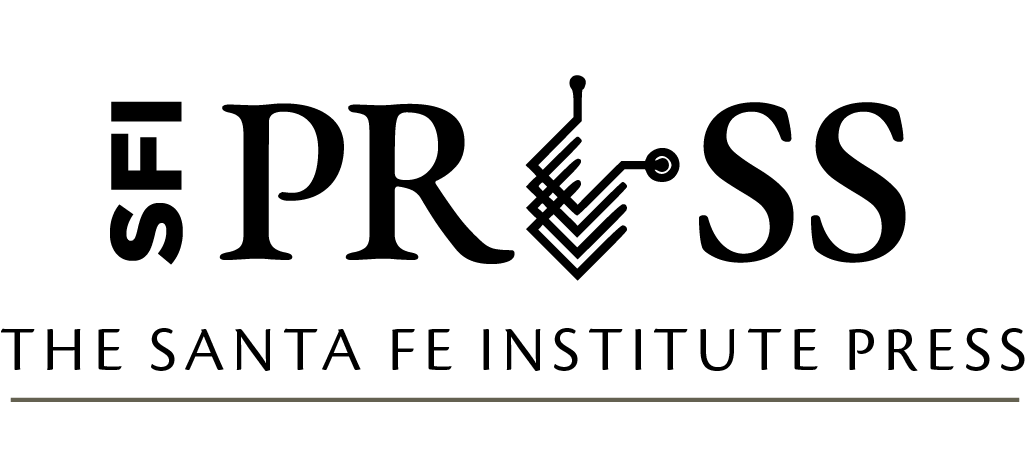Foundational Papers in Complexity Science pp. 2341–2371
DOI: 10.37911/9781947864559.75
Evolving Centralized Institutions from the Bottom Up
Author: Mirta Galesic, Santa Fe Institute; Complexity Science Hub Vienna
Excerpt
The central question of this paper has never been more important: How do we organize and coordinate our collective action to increase joint benefits and reduce harms? This question is particularly critical now, when institutions we took for granted seem to be failing, from communication norms and epistemic frameworks to democratic elections and independent courts, even as our natural and social environments keep on rapidly and irreversibly changing. How do we develop new institutions to manage our collective response to catastrophic weather events, biodiversity loss, global pandemics, spread of misinformation, and extensive migration? Can we rely on bottom-up self-organization of autonomous individuals or do we need an externally imposed, top-down governance?
In this seminal 1993 paper, Stephen Lansing and James Kremer describe a wonderful example of the success of bottom-up organization. Groups of farmers growing rice on colorful terraces of Bali need to solve a tradeoff between water shortage and pest damage. If they all plant rice at the same time, there might not be enough water for all farmers, especially for those farther from the central water source. But if they stagger their planting schedule to avoid water shortages, another problem arises: pests. If newly planted fields are always available, pests can migrate from one field to another, causing a lot of damage. To avoid this, farmers should ideally all plant at the same time. Pests would do some damage, but after harvest there would be a long period when there would be nothing for them to eat and they would perish.
Bibliography
Bliege Bird, R. 2015. “Disturbance, Complexity, Scale: New Approaches to the Study of Human–Environment Interactions.” Annual Review of Anthropology 44:241–257. https://doi.org/10.1146/annurev-anthro-102214-013946.
Downey, S. S., W. R. Haas Jr., and S. J. Shennan. 2016. “European Neolithic Societies Showed Early Warning Signals of Population Collapse.” Proceedings of the National Academy of Sciences 113 (35): 9751–6. https://doi.org/10.1073/pnas.1602504113.
Epstein, J. M., and R. Axtell. 1996. Growing Artificial Societies: Social Science from the Bottom Up. Cambridge, MA: MIT Press and Brookings Institution Press.
Gandica, Y., J. S. Lansing, N. N. Chung, S. Thurner, and L. Y. Chew. 2021. “Bali’s Ancient Rice Terraces: A Hamiltonian Approach.” Physical Review Letters 127:168301.
Goldstone, R. L., and M. A. Janssen. 2005. “Computational Models of Collective Behavior.” Trends in Cognitive Sciences 9:424–430.
Kohler, T. A., and G. G. Gumerman, eds. 2000. Dynamics in Human and Primate Societies: Agent-Based Modeling of Social and Spatial Processes. Oxford, UK: Oxford University Press.
Langton, C. G., C. Taylor, J. D. Farmer, and S. Rasmussen. 1991. Artificial Life II. Redwood City, CA: Addison–Wesley / Longman Publishing Co., Inc.
Lansing, J. S., N. N. Chung, L. Y. Chew, and G. S. Jacobs. 2021. “Averting Evolutionary Suicide from the Tragedy of the Commons.” International Journal of the Commons 15.
Lansing, J. S., and M. P. Cox. 2019. Islands of Order. Princeton, NJ: Princeton University Press.
Lansing, J. S., and J. Miller. 2005. “Cooperation, Games, and Ecological Feedback: Some Insights From Bali.” Current Anthropology 46:328–334.
Lansing, J. S., S. Thurner, N. N. Chung, A. Coudurier-Curveur, Ç. Karakaş, K. A. Fesenmyer, and L. Y. Chew. 2017. “Adaptive Self-Organization of Bali’s Ancient Rice Terraces.” Proceedings of the National Academy of Sciences 114:6504–9.
Miller, J. H., and S. E. Page. 2007. Complex Adaptive Systems: An Introduction to Computational Models of Social Life. Princeton, NJ: Princeton University Press.
Moritz, M., R. Behnke, C. M. Beitl, R. Bliege Bird, R. M. Chiaravalloti, J. K. Clark, S. A. Crabtree, et al. 2018. “Emergent Sustainability in Open Property Regimes.” Proceedings of the National Academy of Sciences 115:12859. https://doi.org/10.1073/pnas.1812028115.
Ostrom, E. 1990. Governing the Commons: The Evolution of Institutions for Collective Action. Cambridge, UK: Cambridge University Press.
Ostrom, E., M. A. Janssen, and J. M. Anderies. 2007. “Going Beyond Panaceas.” Proceedings of the National Academy of Sciences 104:15176–8.
